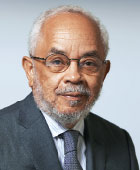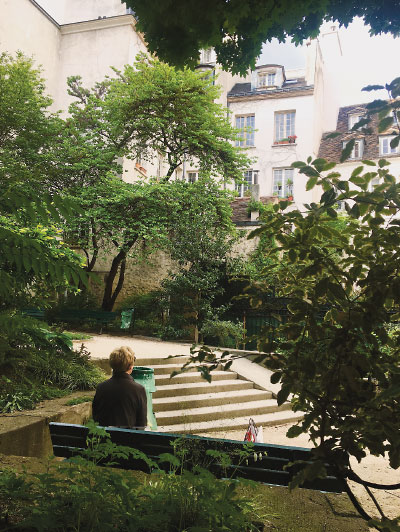Celebrating Psychiatric Health and Place
Abstract

I welcome you to this new column in Psychiatric News. I hope you will find my periodic excursions enjoyable and instructive. I will focus on exploring the connections of mental health, people, and places.
The interconnectedness of these elements is constantly on show in current multidisciplinary discourse. For example, the Nobel Laureate Derek Walcott described his search for home, with tropical St. Lucia as his reference point. There, sunlight and sea transformed his body and made it sing and hum. Mindy Fullilove, M.D., a professor of urban policy and health at the New School for Public Engagement, described how the bulldozing of a city’s neighborhoods can produce stress reactions in people who had lost their homes in such brutalizing urban renewal. Michael Rowe, Ph.D., a Yale professor and mental health theorist, has explored what factors enhance or impede the successful reintegration of severely mentally ill patients into their home communities after an acute phase of illness. Some of those factors are intra-psychic and others environmental. All are related to the patients’ regaining the skills to return to the rights and privileges of community citizenship.
These examples demonstrate that “geography” has become increasingly connected to both general and psychiatric health. “Geography” represents the construct of place, space, landscape, or terrain. In recent years, medical anthropology and medical geography have taken the lead in the relevant scholarship that clarifies the interaction of place and both general medical and psychiatric health. It is accepted that the idea of a healing environment encompasses the physical dimensions of the space as well as the enactments and rituals related to biomedicine that take place within the space. That is why home-space becomes a healing environment when family members participate meaningfully in their caregiving roles. Currently, many religious groups are expanding their remit and redefining their commitment to becoming healing communities.

The Danielle-Mitterand garden in Rue de Bièvre, Paris.
I visited a recent exhibition titled “Personal Geographies” at the Yale Center for British Art. The focus was the English painter Eileen Hogan (born 1946), whose work combines attention to portraits and landscapes. Her visual presentations captured individuals interacting with their unique spaces. It was left to the viewer to divine the quality of the interaction between these two fundamental elements. For example, one portrait revealed Britain’s Prince of Wales, without necktie, sitting at his desk in a naturalistic, informal home setting, attending to correspondence. Conveying measured relaxation and a modicum of task-oriented activity, it illustrated the therapeutic aspects of limited work or active leisure.
Hogan also spent time painting unique dimensions of public parks in Britain. In commentary on the exhibition, she explained that she had sought opinions from the public of their preferred park areas. So, for example, she painted an intimate and personal pathway surrounded by lush greenery; on another canvas, she highlighted the simple gushing of silvery water from a three-foot-high sprinkler. Both scenes evoked images of nature catalyzing reverie and healing calm. Art critic Kathy Czepiel in The Daily Nutmeg New Haven (June 14, 2019) explained that “Hogan’s ability helps us see places and people both as they are and in a new light.”
These thoughts reminded me of my attraction to the Danielle-Mitterand garden in Rue de Bièvre, a narrow street located in Paris’s 5th arrondissement. This tiny park, named after the wife of a French president, offers a tranquil space away from mundane pressure to rest, recuperate, and think about those one loves. I don’t wield a paintbrush of any sort. But there, I have been urged to wonder at the magical effect of the architect’s and urban planner’s work on my mood. At those times, I inevitably return to the work of Chester Pierce, M.D., the Harvard public health intellectual. He advanced the notion of extreme environments like prisons and submarines, comparing them, not surprisingly, to America’s urban ghettos and their detrimental psychological effects. Environments can affect psychological healing processes. ■



